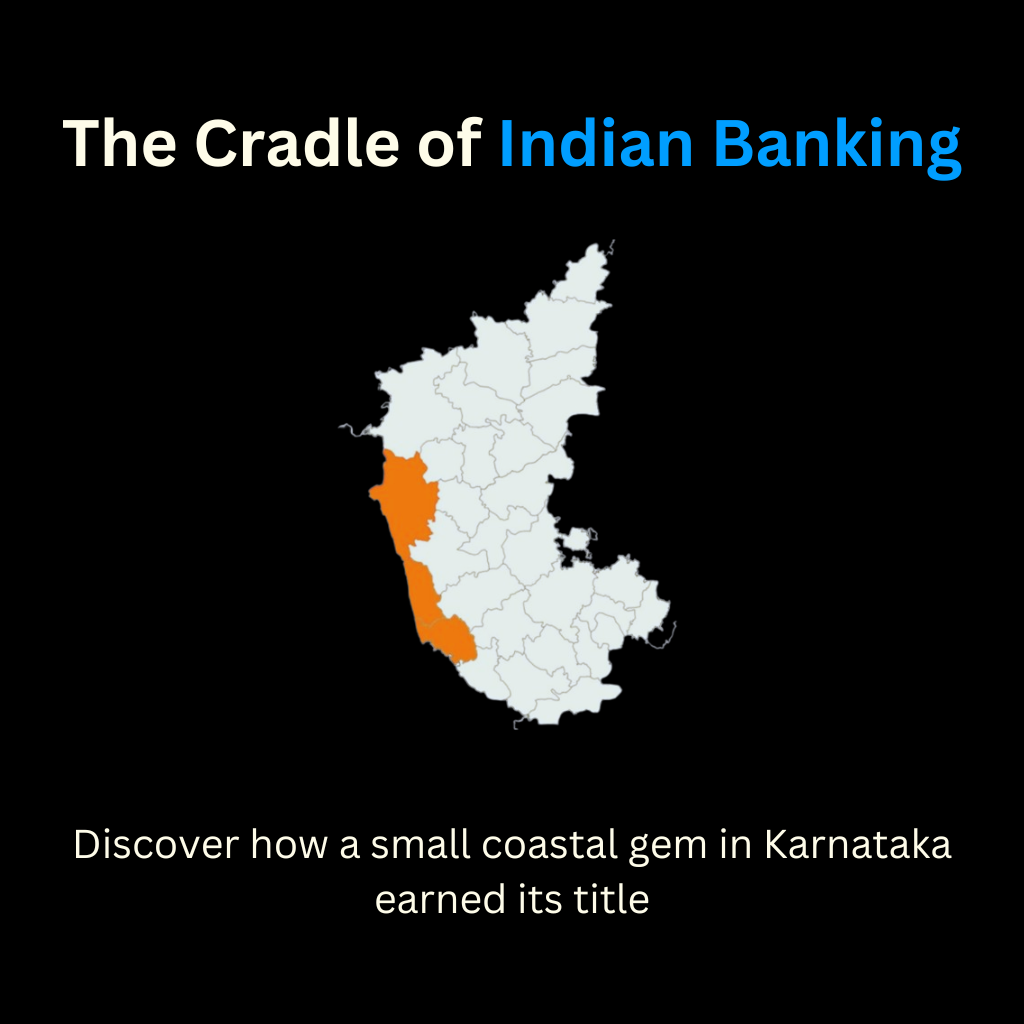Beyond Krishna temples and delectable dosas, South Canara in Karnataka has a deeper legacy - the Cradle of Indian banking.
The seeds of Dakshina Kannada and Udupi’s banking prowess were sown centuries ago within the Matha system. Hindu monasteries, dedicated to Lord Krishna, along with being spiritual centers, served as social and economic hubs. The Mathas, under the able leadership of Swamijis, accumulated wealth and expertise in managing finances. They began offering loans to local businesses and farmers, eventually evolving into full-fledged banks. These schemes fostered trust and financial security for the community.
Canara Bank, started in 1906 by a group of local businessmen was one of the first major and successful banks to emerge from Mangalore in this region. The growing financial needs of the trade and agricultural sectors led to the emergence of Syndicate Bank, Corporation Bank, Vijaya Bank, and Karnataka Banks which were founded in the Manipal, Udupi, and Dharwad districts.
Four of them were later nationalized commercial banks —Syndicate, Canara, Vijaya, and Corporation Bank. All these banks were initiatives of private individuals, highly motivated for community welfare. The fifth bank, Karnataka Bank, is still in private hands.
Several factors contributed to the region’s rise as a banking powerhouse:
- Strong cultural emphasis on saving and thrift: Deeply influenced by religious guidance, the region has a long tradition of saving and investing. The cultural predisposition to financial prudence provided a strong foundation for the banking sector to flourish.
- Entrepreneurial spirit: Rich history of entrepreneurship, dating back to the days of the Mathas; This spirit of risk-taking and innovation was crucial for the success of the region's banks.
- Skilled workforce: The Mathas, with their emphasis on education and knowledge, produced a generation of skilled individuals who could manage the complexities of the banking business.
- Strategic location: Proximity to major trade routes and access to the seaport of Mangalore helped the region's banks connect with a wider market.
The impact of South Canara’s banking boom has been immense. The towns of Dakshina Kannada and Udupi have transformed from sleepy temple towns into bustling financial centers. Banks have provided employment opportunities for thousands of people and fueled local businesses' growth. More importantly, these banks have played a vital role in India's economic development, providing much needed credit to small and medium-sized enterprises and helping to drive financial inclusion.
The region had a lot more influence on the country’s financial landscape than just banks. Chit funds, a popular financial tool in India, find their distinct expression in Udupi. These collective investment schemes enable community members to access lump sums for various needs, from weddings to education, and showcase the resourcefulness of the society. Beyond institutions, individuals from Udupi have made significant contributions to Indian banking. The iconic “Pigmy deposit scheme" designed by Dr Pai was the first step the country took in small-scale savings, which was later replicated by India Post in its saving scheme and a few other banks.
The late N. K. Thingalaya, former chairman and managing director of Syndicate Bank, is said to have listed out some of the achievements of the local banks during a lecture to students of Nitte School of Management. “While Vijaya Bank championed the cause of farmers by extending banking and loan facilities for the agriculture sector, Syndicate Bank had pioneered micro-savings and micro-financing right from its inception. Canara and Corporation banks have to be credited for inclusive banking which was inbuilt in their repertoire," he was quoted as saying by a senior faculty member of the school.
Today, Dakshin Kannada and Udupi remain major centers for Indian banking even though many mergers have reshaped the landscape in the recent past.
Syndicate Bank was merged with the anchor Canara Bank. Corporation Bank with Union Bank of India and Andhra Bank. In 2017, Vijaya Bank, along with Dena Bank, was merged with Bank of Baroda. Canara Bank is now the lone public sector bank standing. Karnataka Bank is still in private hands. Syndicate, Canara, and Vijaya Bank have their headquarters in Bangalore, Corporation Bank and Karnataka Bank are still headquartered in Mangalore. Many of these banks have established museums in their region to display their rich legacy.
Sources
- https://www.rbi.org.in/Scripts/BS_PressReleaseDisplay.aspx?prid=49591
- https://canarabank.com/pages/profile
- https://en.wikipedia.org/wiki/Banking_in_Karnataka
- https://www.livemint.com/news/india/a-saga-ends-in-india-s-cradle-of-banking-1568306728170.html
- https://www.onmanorama.com/travel/outside-kerala/2021/06/21/udupi-untold-story-history.html
- https://www.daijiworld.com/news/newsDisplay?newsID=479100
- https://www.deccanherald.com/archives/a-banker-erased-memory-2396763
